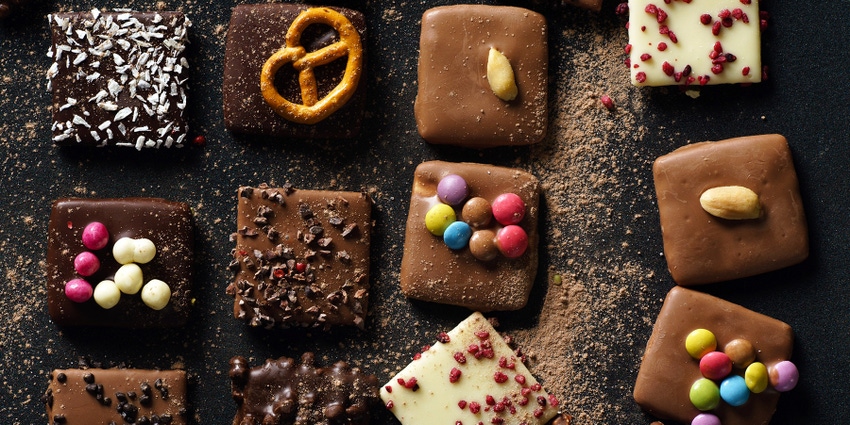Premium chocolate continues to grow, even though total chocolate struggles.
February 5, 2018

Sponsored Content
Premium chocolate has been a sales winner in the past few years—boosting the overall category performance for chocolate. Over the most recent 52 weeks, premium chocolate grew 10 percent, marking the fourth consecutive year of double-digit growth for premium. During the same period, total chocolate grew 2.4 percent across all channels, according to data from insights firm IRI.
NCA, together with its member companies, defines premium chocolate as being at least $11 per pound. Some exceptions are made in case the novelty factor places the item over the $11 threshold, whereas other items who fall just below may be added based on their market positioning.
Given its double-digit growth rate, the share of premium as a percentage of total chocolate has risen from 7.6 percent in 2014 to 10.4 percent today when regarding dollars. Premium makes up 7.5 percent of total chocolate dollars and 4.0 percent of total volume.
During the past four years, premium has consistently grown in dollars, units and volume and increased its relative share compared with total chocolate sales year over year as total chocolate has some struggles in units and volume in 2016 and 2017.
Premium chocolate is now available across channels and covers many purchase occasions, ranging from a little personal indulgence to gifting. Retailers have a great opportunity to leverage premium for cross merchandising with wine, greeting cards and flowers, in addition to the more traditional gift box offering.
Source, IRI, MULO+C 2014-2017
Leveraging iconic brands while differentiating with store brands
While the confectionery and snacking categories have some of the world’s most iconic brands with loyal fan clubs, specialty channels often focus on smaller brands and private label items as a way to build competitive advantages. Oftentimes, these items focus on premium chocolate, special attributes and even gifting items.
In snacks, 53 percent of sales are generated by the top 4 manufacturers, 38 percent by other national or regional brands and 9 percent come from private brands. The private brand share in snacks is three times as high as it is for candy where only 3 percent of total category sales are generated by store label. In candy, 70 percent of sales come from the top 4 manufacturers and 27 percent from other national or regional brands.
According to Nielsen, retailers are seeing store growth in store brand trips versus national brands in most channels. Limited assortment stores have the highest growth in store brand trips, but supercenters, mass, clubs and grocery are all seeing more shopper uptake for the private brand items. Overall, national brands make up 80 percent of sales across categories and channels, according to Nielsen—which is much lower than their shares in snack and candy. Among deep discounters, the share of private brand sales is as high as 49 percent, whereas mass is the lowest at 15 percent, according to Nielsen.
The specialty industry is dominated by niche start-ups with no large players. Make sense of it all and find innovative products your shoppers will love at the Sweets & Snack Expo’s Specialty Market.
Learn more about the specialty experience at 2018 Sweets & Snacks Expo
You May Also Like


